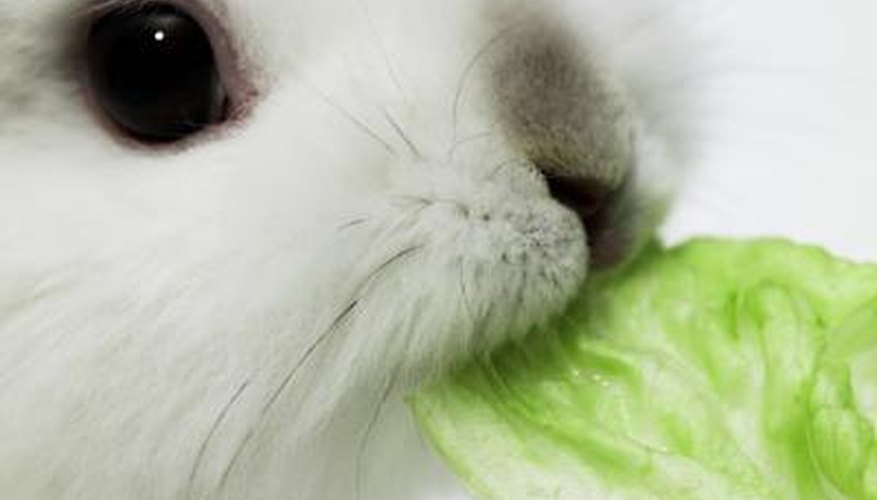Knowing the age of lionhead rabbits is the first step in properly caring for these pets. Age is a major factor in determining what a rabbit needs, as diet, exercise, and heath requirements will change over its lifetime. While pinpointing age in rabbits is difficult even for professionals like veterinarians and breed experts, there are ways to make an educated estimate about this pet's years. Lionhead rabbits offer even more clues through the development of their unique coat.
Examine the lionhead rabbit for physical and behavioural signs of age. Rabbits are born with their eyes closed and without coats. At 1 week of age, they will be covered in fine hair; a few days later they will open their eyes. At 2 weeks old, the ears of the rabbit will be more mobile and not lying flat against the head. The coat will also be thicker and fluffier. At 3 weeks, the rabbits are able to hop and should express interest in solid food. When lionhead rabbits are 1 month old, they will be extremely active, eager to explore, and will begin chewing on anything within reach.
- Knowing the age of lionhead rabbits is the first step in properly caring for these pets.
- At 3 weeks, the rabbits are able to hop and should express interest in solid food.
Check the rabbit for extra fur or "wool." Younger lionhead rabbits have excess fur on their bodies, especially around the hindquarters. The extra fur will moult around 4 months. If the rabbit has not shed out the wool, it is mostly likely under 4 months of age. If the rabbit does not carry this extra wool, it is 4 months old or older. Lionhead rabbits also begin to mature at 3 to 4 months, and enter adulthood at 6 months. Excessive chewing should stop, and they will become sexually mature. At this time, the genitals on the rabbits will become more distinct.
- Check the rabbit for extra fur or "wool."
- If the rabbit does not carry this extra wool, it is 4 months old or older.
Look at the rabbit's teeth and claws for indications of age. Younger rabbits generally have whiter, smaller teeth, while older rabbits will have yellow or brown teeth from use. The claws may also be helpful in determining whether or not the animal is young or old. Younger rabbits have smoother claws. Older rabbits have rougher ones.
Call a veterinarian who specialises in small pets like rabbits. Age is easier to estimate when lionhead rabbits are younger, and very young rabbits may need specialised medical attention if they have been orphaned or abandoned. Once these animals enter adulthood, it becomes even more difficult to determine age. A specialist should provide the best help available in understanding the age of a rabbit.
- Look at the rabbit's teeth and claws for indications of age.
- Age is easier to estimate when lionhead rabbits are younger, and very young rabbits may need specialised medical attention if they have been orphaned or abandoned.
TIP
Remember that it is extremely difficult to tell age in rabbits, and physical and behavioural clues can only provide so much information. A rabbit that has rough claws, bad teeth, and an unhealthy coat does not necessarily indicate an old rabbit; it could be a young rabbit that has not been properly cared for. For the best advice on age-related health, dietary, and exercise issues, take rabbits to a veterinarian to be examined.
WARNING
Use caution when handling very young rabbits, and always supervise children around any small pets to prevent injury to both the child and the animal.
